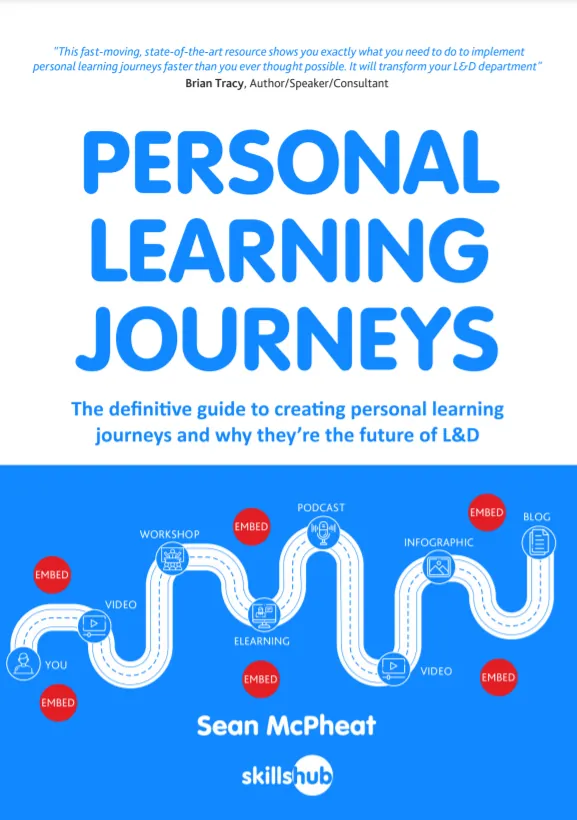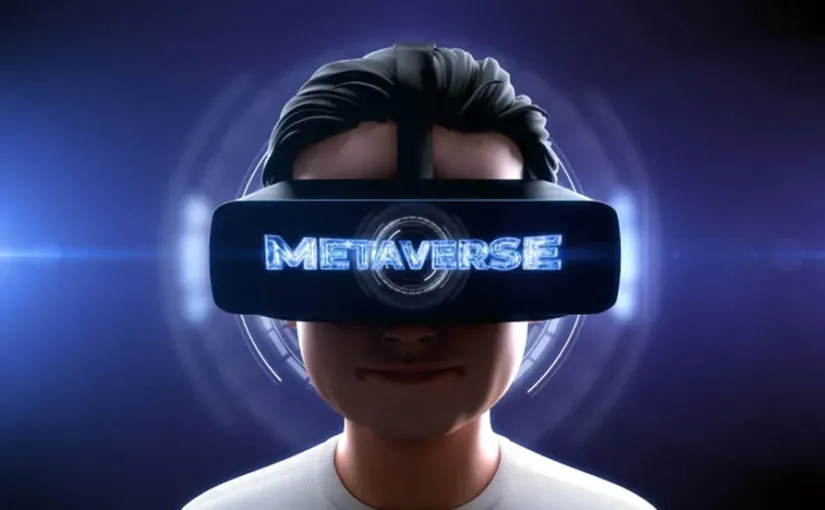
Did you know that Cognitive Learning Theory is one of the most influential theories in the field of psychology? It explains how we learn and process information.
According to this theory, learning is an active process that involves the mental organisation and processing of new information, and it is influenced by a person’s prior knowledge, experience, and perceptions.
In this blog, we’ll explore Cognitive Learning Theory in detail, discussing its key concepts, the benefits of a cognitive approach, and how to incorporate Cognitive Learning Theory in workplace learning and development.
What is the Cognitive Learning Theory?
Swiss psychologist Jean Piaget founded the school of cognitive psychology in the 1930s as an alternative to the prevailing behavioural psychology school. He described units of learning as schema, which build up over a lifetime to create an individual’s unique schematic or way of understanding the world.
Cognitive psychology is so-named because it focuses on the concept of cognition, defined by Merriam-Webster as “the act, or process of knowing.” This definition includes two key ideas – the notion that cognition is an action, rather than something that passively occurs, and the idea of a process, i.e., a transition that occurs gradually.
Piaget studied children, who are, in a sense, blank canvases to begin with, and who therefore demonstrate the purest kind of cognitive learning. Crucially, he wanted to know more about the mental processes that produce learning, rather than the behaviours that reveal it. However, his theories apply just as well to lifelong learning and workplace training.
What are the Three Main Cognitive Theories of Learning?
There are actually three different theories that might come under the rubric of cognitive learning. Let’s take these theories one by one. Here’s a brief summary of how cognitive learning theory fits into the range of cognitive theories about education.
Cognitive Learning Theory
In its purest form, cognitive learning involves metacognition – thinking about thinking. It describes a looping process that has three components:
- Comprehension – realising how a piece of understanding (schema) fits within your current knowledge, and how it may be useful.
- Memory – adding this new piece to your remembered store of knowledge to derive a fuller understanding of a topic.
- Application – using this new knowledge in real-life settings, including practical exercises, writing, or speaking about the topic.
The process of application further strengthens comprehension, as new information and experiences rush in, and the loop continues.
You’ll notice that all three stages of cognitive learning are internal processes, though informed by sensory input from the external world.
Social Cognitive Theory
The Social Cognitive Theory was developed in the 1960s by Albert Bandura (as social learning theory (SLT)). This concept gained its current name in the 1980s.
Social Cognitive Theory suggests that learning occurs in a social context with a reciprocal and dynamic interaction between:
- An individual
- Their environment
- Their and others’ behaviour
Social influence and social reinforcement are important to this model, which means it tends to focus on interactions between teacher and pupil, as well as between students in a group. It’s less applicable to the purely self-motivated learning which occurs, for instance, when you read a book or explore Wikipedia.
There’s a social feedback loop in SCT, by which past experiences influence a student’s expectations and readiness to learn, and this conditions their future ability to study.
Social reinforcement can strengthen the desire to learn by providing the dopamine kick of belonging to a community and contributing towards a shared goal.
Think of a yoga class, for instance. Students learn by observing both the teacher and one another and benefit from the social reinforcement of encouragement and approval.
It also explains why some students may disengage from study if they have had negative learning experiences in the past, and are thus negatively conditioned. Some preparatory work may be needed to render traumatised students open to new learning.
Cognitive Behavioural Theory
Cognitive Behavioural theory, which gave rise to the popular therapy, CBT, was founded in the 1960s by Dr. Aaron T. Beck, who worked at the University of Pennsylvania. It posited that both the inner world of thoughts and feelings and the external world of behaviours were inextricably linked and bound to one another.
The feedback loop here is one of the external stimuli affecting bodily and mental sensations which, in turn, affect behaviour. This loop, however, runs both ways. It becomes possible to alter one’s thoughts and physical sensations by changing one’s beliefs and behaviour in sometimes quite simple ways.
The potential for improving mental health through consciously changing both behaviour and one’s interpretation of naturally occurring thoughts, developed into the discipline and practice of CBT.
All three of the schools of thought described here emphasised meta-cognition, the act of thinking about thinking. Next, we look at some reasons why this approach might prove valuable for learning and development.

What are the Benefits of a Cognitive Approach to Learning?
Cognitive learning categorises mental processes into different types and aims to maximise the effectiveness of each of the following components:
- Attention – the ability to focus
- Observation – the ability to interpret stimuli
- Long-term memory – the retrieval of relevant current knowledge
- Categorisation – the ability to link new stimuli to existing schema
By applying this metacognitive approach, teachers, or employers devising online learning courses can ensure that the materials they produce, and the teaching methods they employ, are best suited to building cognitive skills.
There are several benefits of applying Cognitive Learning Theory to your learning programs:
- It ensures that materials are produced which incorporate current understanding, memorability, and relevance.
- It helps course construction by making it more systematic and engaging.
- It does not neglect the learning environment or the value of social reinforcement.
- It creates a form of learning where theory is backed up with practical application, which in turn reinforces learning.
When learners can see the practical applicability of the lessons they are absorbing, they are more likely to focus and retain knowledge. A cognitive approach makes this aspect of education explicit.
How Can You Incorporate Cognitive Learning Theory in Workplace L&D?
Now that we understand a little better what CLT is, it’s worth asking how these methods can be employed in workplace learning and development (L&D). Whether you run in-person training, online training, or provide blended learning, CLT should improve knowledge retention and learner engagement.
Below, we give some recommendations for strategies to help incorporate this theory into your everyday workplace training.
Learning through discovery strategy
Learning new skills can be especially engaging because the novelty factor makes the stimuli more interesting. Of course, your trainees also have to believe that the skills will be useful in practice too.
Motivate learners to explore and discover, without necessarily directing their attention explicitly. A library of video interviews, or a museum of visual exhibits all use this technique, encouraging self-motivated browsing.
In an eLearning platform, you could include elements that can be studied in any order, while contributing to an overall understanding of the subject. The elements may still be mandatory, but the path between them may avoid being prescriptive.
This approach suits a topic less driven by logic, science, or technology (where it may be necessary to take a more directed approach).
Learner-centred strategy
To adopt a learner-centred approach you first need to know what your students already understand. In person, this could be achieved with a brainstorming session or a show of hands.
Online, this strategy might entail an early quiz, aimed at gleaning the student’s individual level of prior knowledge. Modules could then be adjusted or selected according to the current comprehension level of each participant.
In both in-person and online learning, analogies can be introduced which relate the topic to students’ probable experiences. However, it’s worth remembering that it may be hard to create truly universal examples, given learners from different cultural and socioeconomic backgrounds.
Personalised learning strategy
A personal learning journey or strategy does not mean precisely tailoring the course to each individual but instead allowing the methodology of learning to be adaptive to each learner’s prior knowledge level and learning ability.
For instance, you might have different strands aimed at beginner, intermediate, and expert-level participants, allowing learners to place themselves on a level that matches their confidence.
You might also allow a course to be studied from home, be taken within an extended timeframe, or broken down into bite-sized modules, to aid focus and concentration. In a personalised learning strategy, the content may be the same, but the route taken to absorb it may differ from learner to learner.
Meaningful experiences strategy
Unlike old-fashioned route learning, where repetition and writing out are used to hardwire facts into the human brain (often without true comprehension), a strategy using meaningful experiences renders the theoretical practical.
This doesn’t necessarily mean arranging in-person, out-of-classroom experiences (although it could if resources permit). What it does require is an approach that uses hypothetical situations, real-life experiences, and simulations to take the learner to a place where they must apply their learning.
Gamification techniques exist on many learning platforms that allow an interactive response. They may also include content that creates an empathetic or practical understanding of a topic, such as talking head interviews with real-life examples of the topic at hand.
Listening to a taped interview with someone who has experienced something, or directly interacting with them, builds empathy and understanding. Work placements and mentoring are examples of meaningful experiences which instil learning.

Cognitive Learning Theory Examples
Here are three short examples of CLT in practice:
1: Learning through Demonstration and Practice
A group of learners is being taught a new software platform. They are first shown a live demonstration of the tutor running through the various functions. Questions are asked and answered during an online tutorial. [practical instruction and social reinforcement]
Students are given a chance to play with the new software in a sandboxed offline version, before having brief one-to-ones with the tutor. They then undertake a more structured session where they have to carry out key tasks. [learning through exploration and application]
Throughout the tasks, pop-up reminder boxes allow students to find out more about specific functions. At the end of the course, they complete a quiz, to ensure the learning has been retained.
2: Learning through Empathic Understanding
A challenging topic (workplace bullying) is made real with video testimonials, group discussions, and role-play. An in-person group session is paired with online resources which the students are invited to peruse in any order. [self-motivated study, social reinforcement]
The online sessions involve interactivity in which the video pauses and the student is asked to reflect on what they have seen and identify problematic behaviour in the characters featured in the videos. [practical application, empathy]
The use of third-party fictional characters allows students to engage their empathy without having to reveal their own personal stories if they feel unable to. The invitation to reflection allows time for each learner to relate the new stimuli to their own store of knowledge and experiences, personalising the experience.
Sharing in a safe environment in the in-person session allows for social reinforcement, which helps motivate the desire to complete the online portion of the course.
3: Learning through Individual Exploration
A set of online resources is designed to support sales reps learn new negotiation tactics. There’s no prescribed pace at which to study or order in which topics must be covered. However, it is recommended that all reps complete all topics by the end of their first year. [self-motivated, personalised study]
Participation is further motivated by the awarding of completion badges and points. Competition between reps soon ensures that everyone makes the time to cover all the relevant subjects. [social reinforcement and gamification]
An online resource of sales-related eBooks is made available, saving employees considerable personal expense, and motivating further (optional) reading.
All of the above examples pay as much attention to how students learn as to what they learn. The cognitive approach leverages psychology to build engagement and promote knowledge retention.

FAQs
Here are the top three recurring questions on the topic of Cognitive Learning Theory:
How does Cognitive Learning Theory apply to adults?
It isn’t only children who benefit from a cognitive approach. We all learn more efficiently when we are actively engaged, and when we know why we are learning a particular topic and can see its practical application demonstrated.
What is the best learning theory for adults?
Much will depend upon the workplace environment, and the resources available for learning. If team dynamics are vital to the success of your workplace, then a social cognitive approach might work best.
If you have a highly distributed team that meets infrequently, then Cognitive Learning Theory in its purest form (focusing on comprehension, memory, and application) might be advisable.
If you have a high-intensity, customer-focused workplace where behaviour is key to performance (such as sales) then a Cognitive Behavioural Theoretical approach might work best. This ought to instil good working practices which get the best out of each individual.
In some workplaces, a mixture of all three approaches might work well, depending on the type of material, and the opportunities to learn with in-person group sessions, individual mentoring, or remote, self-motivated study.
Like all learners, no two workplaces are alike, so no one prescription suits all environments.
What is the main idea of Cognitive Learning Theory?
Boiled down to its essence, CLT is about applying psychology to the process of instilling knowledge. By thinking harder about what deeply engages learners, it’s possible to design courses that deliver more than rote, hit-and-miss outcomes.
Metacognition is key – thinking about thinking. In particular, understanding that a person’s ability to learn a topic depends upon their perceptions, prior knowledge, and what they expect and hope to learn.
Conclusion
When designing an eLearning course or LMS, it’s vital to go deeper than merely drawing up a list of what a student needs to know and presenting that information in a logical order.
Skillshub’s online learning platform allows you to find or create courses that are laser-targeted at specific cohorts of learners, and designed to engage. They achieve this by applying the lessons of cognitive learning theory, inspiring, encouraging reflection, and relating content to the student’s own experience and expectations.
As an eLearning company, Skillshub is committed to creating efficient and impactful learning experiences.
Why not browse through our eLearning platform and bespoke course creation tool? You’ll discover a host of readymade courses, learning approaches, and course designs, each created with a unique audience in mind.
To engage and stimulate your students or trainees, trust Skillshub.

Learn How To Create Personal Learning Journeys For FREE!













